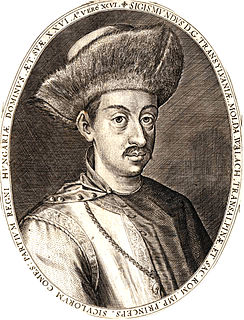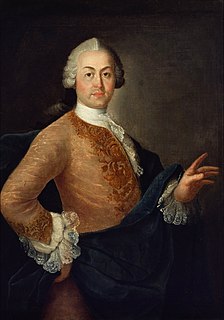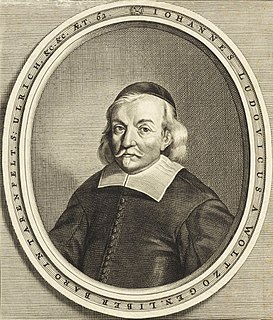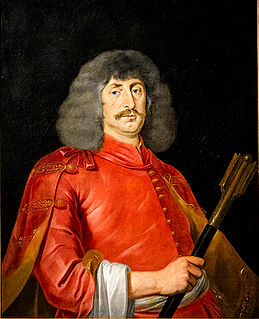 W
WJános Apáczai Csere was a Transylvanian Hungarian polyglot, pedagogist, philosopher and theologian, famous for his work The Hungarian Encyclopedia, the first textbook to be written in Hungarian. The Encyclopædia Britannica calls him "the leading Protestant scholar and writer" of 17th-century Hungary.
 W
WMichael Apafi was Prince of Transylvania from 1661 to his death.
 W
WMichael Apafi was the son of the Hungarian Michael I Apafi and Anna Bornemisza. Following his father, he was Prince of Transylvania from 10 June 1690 to 1699.
 W
WBaron Péter Apor de Altorja (1676–1752) was a Hungarian count (főispán) and historian. He was a member of the aristocratic Apor family.
 W
WÁdám Balogh de Bér was one of the most famous kuruc colonels of the Hungarian army during Rákóczi's War for Independence against the rule of the Austrian Habsburg dynasty.
 W
WJános Bánfihunyadi, better known by his Latinized name Johannes Banfi Hunyades or his pseudonym Hans Hungar, was a Hungarian alchemist, chemist and metallurgist. He emigrated to England in 1608 and built a reputation among the academic circles of England and Hungary, associating with such figures as the alchemist Arthur Dee, astrologer William Lilly, physician Jonathan Goddard and scientist Kenelm Digby
 W
WCountess Elizabeth Báthory de Ecsed was a Hungarian noblewoman from the noble family of Báthory, who owned land in the Kingdom of Hungary.
 W
WSigismund Báthory was Prince of Transylvania several times between 1586 and 1602, and Duke of Racibórz and Opole in Silesia in 1598. His father, Christopher Báthory, ruled Transylvania as voivode of the absent prince, Stephen Báthory. Sigismund was still a child when the Diet of Transylvania elected him voivode at his dying father's request in 1581. Initially, regency councils administered Transylvania on his behalf, but Stephen Báthory made János Ghyczy the sole regent in 1585. Sigismund adopted the title of prince after Stephen Báthory died.
 W
WGabriel Bethlen was Prince of Transylvania from 1613 to 1629 and Duke of Opole from 1622 to 1625. He was also King-elect of Hungary from 1620 to 1621, but he never took control of the whole kingdom. Bethlen, supported by the Ottomans, led his Calvinist principality against the Habsburgs and their Catholic allies.
 W
WStephen Bocskai or Bocskay was Prince of Transylvania and Hungary from 1605 to 1606. He was born to a Hungarian noble family. His father's estates were located in the eastern regions of the medieval Kingdom of Hungary, which developed into the Principality of Transylvania in the 1570s. He spent his youth in the court of the Holy Roman Emperor, Maximilian, who was also the ruler of Royal Hungary.
 W
WZsófia Bosnyák was a Hungarian noble and wife of Count Ferenc Wesselényi.
 W
WJános Bottyán, also known as Blind Bottyán, Vak Bottyán János was a Hungarian kuruc general.
 W
WCatherine of Brandenburg was an elected Princess of Transylvania between 1629 and 1630. She was the daughter of John Sigismund, Elector of Brandenburg, and Anna of Prussia
 W
WJohannes Caioni was a Transylvanian Franciscan friar and Roman Catholic priest, musician, folklorist, humanist, constructor and repairer of organs of Romanian origin.
 W
WChristian August of Saxe-Zeitz, was a German prince of the House of Wettin.
 W
WJános Kemény was a Hungarian aristocrat, writer and prince of Transylvania.
 W
WLeopold Karl von Kollonitsch, also spelt Collonicz, Colonitz, Kollonitz, Kolonits, and Kolonić, and called in Hungarian Kollonich Lipót, was a cardinal of the Holy Roman Church, Archbishop of Kalocsa and later of Gran, or Esztergom, and Primate of Hungary. Also a count of the Holy Roman Empire, he was a leading figure of the Hungarian Counter-reformation.
 W
WMarko Stjepan Krizin was a Croatian Roman Catholic priest, professor of theology and missionary, who was active in the 17th century. In the course of the struggle between Catholicism and Calvinism in the region then, he was executed for his faith. He has been declared a saint by the Catholic Church, the third Croat to be so honored.
 W
WZsuzsanna Lorántffy, anglicized as Susanna Lorantffy was a Princess consort of Transylvania by marriage to György Rákóczi I, Prince of Transylvania. A passionate Calvinist, she assisted her husband in his successful struggle to introduce Protestant reforms in the Transylvanian church.
 W
WCarlos Mardel was a Hungarian-Portuguese military officer, engineer, and architect. Mardel is primarily remembered for his role in the reconstruction effort after the 1755 Lisbon earthquake.
 W
WIbrahim Müteferrika was a Hungarian-born Ottoman diplomat, publisher, economist, historian, Islamic theologian, sociologist, and the first Muslim to run a printing press with movable Arabic type.
 W
WIstván Ordódy de Ordód et Alsólieszkó was a Hungarian influential lord, vice-palatine of Hungary in the XVIIth century.
 W
Wİbrahim Peçevi or Peçuyli İbrahim Efendi or (in Bosnian) Ibrahim Alajbegović Pečevija (1572–1650) was an Ottoman-Bosnian historian-chronicler of the Ottoman Empire.
 W
WFrancis I Rákóczi was a Hungarian aristocrat, elected prince of Transylvania and father of Hungarian national hero Francis Rákóczi II.
 W
WFrancis II Rákóczi was a Hungarian nobleman and leader of the Hungarian uprising against the Habsburgs in 1703-11 as the prince of the Estates Confederated for Liberty of the Kingdom of Hungary. He was also Prince of Transylvania, an Imperial Prince, and a member of the Order of the Golden Fleece. Today he is considered a national hero in Hungary.
 W
WGeorge I Rákóczi was Prince of Transylvania from 1630 until his death in 1648. Prior to that, he was a leader of the Protestant faction in Hungary and a faithful supporter of Gabriel Bethlen, his predecessor as Prince. When Bohemian nobles requested military support in their struggles against the Habsburg Monarchy, Rákóczi persuaded Bethlen to help and commanded Transylvanian forces in several battles. Rákóczi was elected prince after Bethlen's death, succeeding Bethlen's wife Catherine of Brandenburg and brother Istvan.
 W
WGeorge II Rákóczi, was a Hungarian nobleman, Prince of Transylvania (1648-1660), the eldest son of George I and Zsuzsanna Lorántffy.
 W
WSigismund Rákóczi was Prince of Transylvania from 1607 to 1608. He was the son of János Rákóczi, a lesser nobleman with estates in Upper Hungary. Sigismund began a military career as the sword-bearer of the wealthy Gábor Perényi in Sárospatak. After Perényi died in 1567, Sigismund served in the royal fortresses of Eger and Szendrő. The royal chamber mortgaged him several estates to compensate him for unpaid salaries. He received Szerencs in 1580, which enabled him to engage in the lucrative Tokaji wine trade. He took possession of the large estates of András Mágóchy's minor sons as their guardian, and the second husband of their mother Judit Alaghy, in 1587.
 W
WCount Francis Rhédey de Kisréde was a Hungarian noble, who served as Prince of Transylvania between 1657 and 1658.
 W
WAlbert Szenczi Molnár was a Hungarian Calvinist pastor, linguist, philosopher, poet, religious writer and translator.
 W
WEmeric Thököly de Késmárk was a Hungarian nobleman, leader of anti-Habsburg uprisings like his father, Count István Thököly, before him. Emeric was prince of Upper Hungary, an Ottoman vassal state, from 1682 to 1685, and briefly Prince of Transylvania during the year 1690. Having formed an alliance with the Turks, Thököly assisted the Ottoman Empire at the Battle of Vienna in 1683 and led the Turkish cavalry at the battle of Zenta. Refusing to surrender to Habsburg Emperor Leopold I, Thököly lost his principality of Upper Hungary and finally retired to Galata, near Istanbul, with large estates granted him by Sultan Mustafa II.
 W
WCount Ferenc Wesselényi de Hadad et Murány was a Hungarian military commander and the palatine of the Royal Hungary.
 W
WJohann Ludwig von Wolzogen (1599–1661) was an Austrian nobleman and Socinian theologian.
 W
WMiklós VII Zrínyi or Nikola VII Zrinski was a Croatian and Hungarian military leader, statesman and poet. He was a member of the House of Zrinski, a Croatian-Hungarian noble family. He is the author of the first epic poem, The Peril of Sziget, in Hungarian literature.